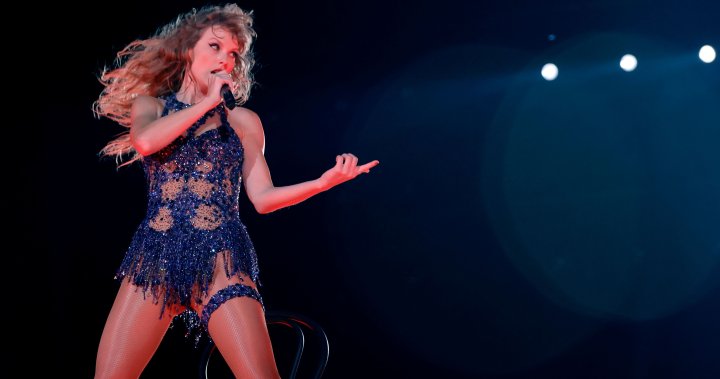For almost two years, COVID-19 saw to it that there was no live music. Tours stopped, roadies lost their gigs, venues suffered, and support staff were laid off. But once COVID restrictions were lifted, the industry came back to life, albeit with a non-insignificant degree of difficulty.
For example, Sum 41’s Deryck Whibley told me that when they returned to the road, they had to do it old-school in a van because no tour buses were available. Most had been parked for nearly two years and weren’t roadworthy yet. Supply and demand jacked the prices of any rental agency that did have buses available and those were taken by acts who could afford it. Sum’s buses ended up going to Metallica.
There were other problems. Many roadies who were thrown out of work left the industry and didn’t want to come back. Finding enough sound and light equipment to rent was hard. Many venues didn’t survive the lockdowns and had permanently shut their doors.
But this summer has seen a return to The Before Times. Concerts and festivals have been packed. And even as Taylor Swift and Beyonce are getting the most attention for hoovering up hundreds and hundreds of millions of dollars in box office revenue, other acts are doing well.
On his current tour, Drake is playing in front of as many as 34,000 people a night and recently became the first rapper to earn over US$5 million for a single show. Ed Sheeran’s BC Place gig on Sept. 2 attracted 65,601 people, breaking a 2009 record held by U2 set during their 360 Tour. The Weeknd broke attendance records in London by bringing in over 160,000 people over two nights. A swing through Australia saw 120,000 join him for two nights in Brisbane, close to 250,000 over three nights in Sydney, and somewhere north of 150,000 for two shows in Melbourne.
My home market, Toronto, has seen incredible demand over the summer with acts routinely backing 17,000 people into Live Nation’s Budweiser Stage. And woe to anyone trying to get around downtown on a night there’s a concert at Scotiabank Arena, especially when the Blue Jays have a home stand at Rogers Centre.
Live Nation and AEG, the world’s largest concert promoters, are seeing record revenues. One estimate says that live music revenue in Canada will hit somewhere around $1.3 billion with a projected annual growth rate of over three per cent. The average spend by a Canadian concertgoer is approaching $200.
So all’s good, right? Mostly, but …
Just like every other sector of the economy and society, the live music industry is dealing with rising costs, higher insurance premiums, higher interest rates for financing tours, servicing debts left over from COVID-19, airfare and accommodation needs, and other financial pressures. There are stories about porta-potties being in such high demand that some festivals have been underserved. And there’s plenty of opportunistic gouging, too. Someone sent me a picture of an ordinary service parking lot in Seattle that was charging $120 a spot for a Taylor Swift show.
Running a small-to-mid-sized venue is increasingly difficult because there’s a limit to how much operators can scale things. It’s far easier for Live Nation to juggle rising costs than it is for a 250-capacity bar that wants to feature live acts. These challenges are reflected not only in higher ticket prices but increases on what we have to pay for parking, concessions, and alcohol at shows.
Which brings me to Gen Z. These young fans born between 1997 and 2012 are the lifeblood of so many live scenes. They seem especially sensitive to buying booze at gigs. Reports are that they’re drinking less, putting a big kink into an important revenue stream. Young fans are either pre-drinking before heading out or opting for a couple of edibles before going to the show. Many are pursuing a more straight-edge lifestyle, eschewing alcohol and drugs in pursuit of better mental health. Since smaller venues greatly depend largely on bar sales for survival, there’s cause for worry. And how can you fault Gen Z for imbibing less of the demon alcohol?
Fewer sales at the bar have created a new problem: merch cuts.
An important revenue stream for artists is the sale of T-shirts and other souvenir ephemera at shows. Because these sales take up floor space, venues demand a cut of sales. To compensate for higher costs and lower alcohol sales, venues are demanding that they get more of a taste. It’s now not uncommon for a road manager to fork over 15 to 25 per cent of gross soft good sales (T-shirts and the like) along with additional vig on things like CDs and vinyl. These rates are often negotiable, but chances are the artist will end up paying something to the venue.
Jeff Rosenstock, an American singer who’s been on the road for much of the summer, knows this all too well. He’s been documenting how much he’s had to fork over for merch cuts.
It’s really hard to take sides because both the small-to-medium-sized artist and the small-to-medium-sized venue are struggling with inflation, increased rents, a jump in taxes, and higher labour costs. Bigger performers also have to pay these fees but it’s certainly easier for a Taylor Swift to roll with the changes than it is for a punk band travelling from show to show in a 1977 Ford Econoline van and existing on leftover hotdogs scavenged from 7-11.
There are other issues afoot. Dec. 31 is the deadline for repaying Canadian Emergency Business Account (CEBA) loans. Many venues across Canada were depending on that hand-up to survive through 2020 and 2021. The Canadian Live Music Association is worried that some of its members won’t be pay back those loans in time. If that happens, then what? Meanwhile, governments are also making noises about cutting back on the amount of money they get to the arts sector. That will inevitably impact the live music industry.
High prices are here to stay. What lies ahead? Let’s examine that.
Fans will have to make a choice between saving up their money to see a big act or using that same cash to see multiple smaller shows. Music residencies are also becoming more popular. Instead of artists travelling the world to reach their fans, more are opting to set up in a given city and have fans come to them. If, for example, you’re a Canadian fan of U2, your only current option to see them is to pay big American dollars for tickets to their residency at the MSG Sphere in Las Vegas. Plus fork out additional cash for airfare, hotel, and food, of course. Other acts are willing to play in venues like casinos. At least two major Ontario casinos opened new performance spaces this year, a trend that we’re seeing across the continent. Again, this puts the travel burden on the fan.
Back on the artist side, there’s the growing lure of playing corporate gigs. This has no bearing on the average concert fan and is generally restricted to well-off acts who are happy to take a couple of million dollars from some tech bro to play at a company retreat. But such paydays sometimes create a bad smell if word leaks out to the fanbase.
So where do we go from here? How far can acts and promoters push us? Inflation and interest rates are prompting everyone to look at their discretionary spending. Entertainment is usually one of the first things that gets cut.
Again, the big acts, the big venues, and the big promoters will probably end up doing just fine. But what about the little guy? I guess we’ll see.
— with files from FYIMusicNews.ca




